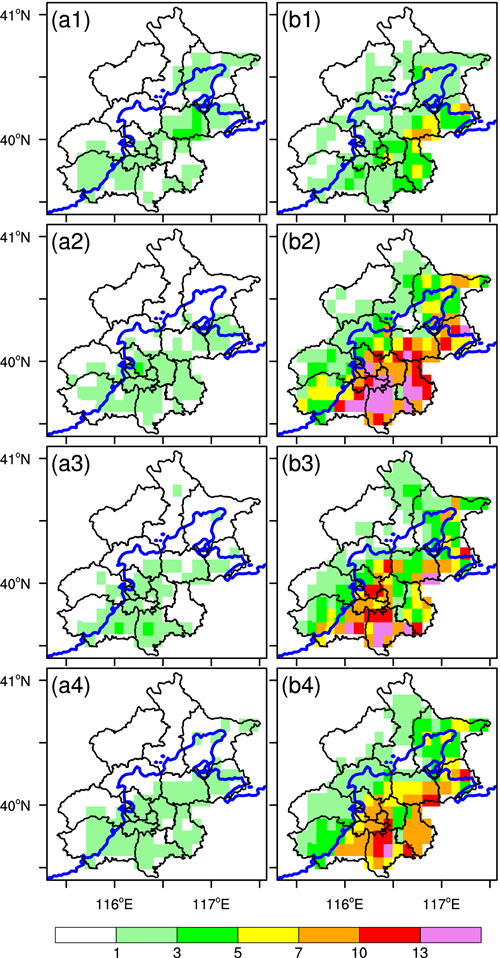IAP Reveals Characteristics of Cloud-to-ground and Intracloud Lightning in the Beijing Metropolitan Region during 2005-2007
Date:2016-11-08
Lightning is a natural electric discharge phenomenon consisting of cloud-to-ground (CG) and intracloud (IC) flashes, and accounts for many human casualties and tremendous property damage worldwide every year. Lightning activity is closely associated with severe convective events, such as the 21 July 2012 torrential rainfall event in the Beijing Metropolitan Region (BMR). The study of lightning statistic characteristics is of great importance for lightning protection and thunderstorm forecast.
Due to the technological limitations of detecting IC lightning, previous statistical analyses of lightning characteristics usually use only the CG lightning data, though the IC lightning generally occurs more frequently than CG lightning. With the rapid development of lightning detection systems of both CG and IC lightning in recent years, statistic studies on both CG and IC lightning have been carried out. What are the characteristics of lightning statistic in the BMR when both CG and IC lightning are considered? In order to answer this question, IAP researchers, WU Fan and Prof. CUI Xiaopeng, together with their co-authors: Prof. Da-Lin ZHANG from University of Maryland of USA, associated professor LIU Dongxia from IAP, and associated professor ZHENG Dong from Chinese Academy of Meteorological Sciences, used the CG and IC lightning observation form the SAFIR-3000 (Surveillance et Alerte Foudre par Interférometrie Radioélectrique) to investigate the CG and IC lightning statistic characteristics over the BMR during 2005–2007.

Fig. 1. (a) Monthly variations of CG (filled bars) and IC (hatched bars) flash counts, the percentage of CG flashes relative to total flashes (PCG, black line) and the percentage of positive CG flashes relative to the CG flashes (PPCG, red line). (b) Diurnal variations of (a) CG (black line) and IC (red line) flash counts relative to their total daily amounts (%). (Wu et al, 2016)

FIG. 2. Spatial distributions of flash density: (a1)–(a4) are the CG flash densities from 2005 to 2007 (shaded, flashes km?2) and the three-year means (shaded, flashes km?2 yr?1), respectively; (b1)–(b4) are the same as (a1)–(a4) but for the IC flash density. The blue lines denote the 200 m terrain elevation. (Wu et al., 2016)
Their results show the presence of 299 lightning days with 241,688 flashes, most of which were IC lightning flashes. Only 19% of the total flashes were CG lightning flashes, of which 14% were positive CG. Most lightning activity occurred during the summer months (June–August), with a major diurnal peak around 19:00 BST (Beijing Standard Time) and a secondary peak around 23:00 BST. Spatial variations in flash density and lightning days both exhibited an obvious southeastwardly increasing pattern, with higher flash densities or more lightning days occurring in the southeastern plains and lower values distributed on the northwestern mountains.
Moreover, significant topographic effects on the spatiotemporal variations in lightning activity are emphasized by their study. That is, flash counts on the northeastern and southwestern mountains peaked in the afternoon, whereas those on the southeastern plains peaked in the late night to early morning, which could be attributed to the propagation of thunderstorms from the mountains to the plains. The results showed that the SAFIR-3000 lightning data (including CG and IC lightning) are more useful than CG lightning data for forecasting the development and propagation of thunderstorms over the BMR.
The results have been accepted to publish in Journal of Applied Meteorology and Climatology.
Citations:
